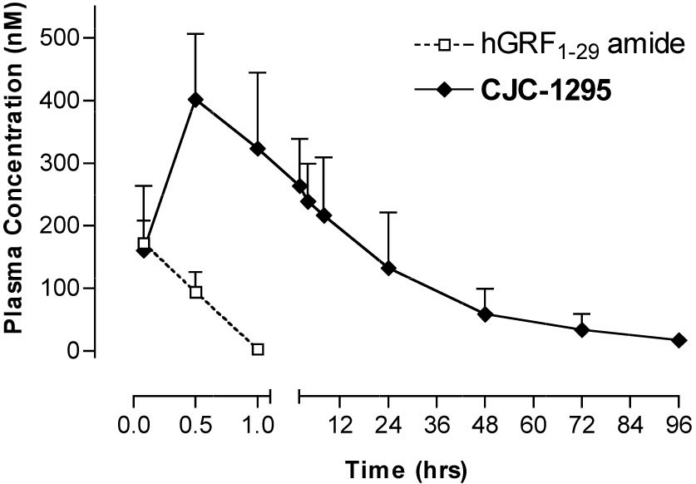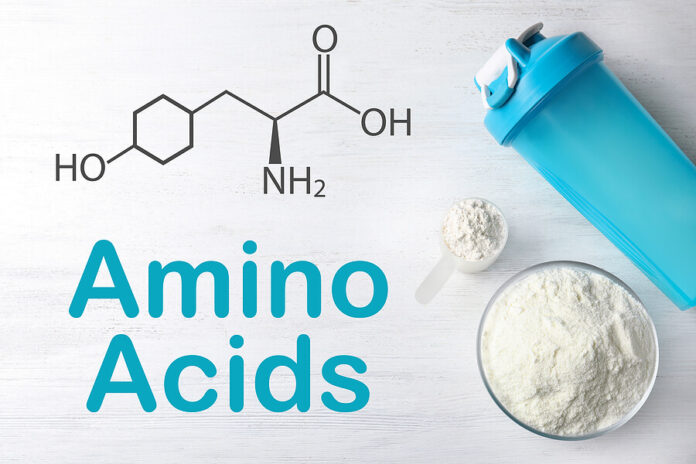What is the connection between CJC-1295 and GHRH 1-29? If you are curious and want to find out the answer, please keep reading this article we have made for your benefit. Without further ado, let’s dive in!
The tetrasubstituted peptide CJC-1295 No DAC has a molecular weight of 3367.2 and a chemical structure represented by the formula C152H252N44O42. It has the structure of a peptide chain that is composed of 30 amino acids. Its usefulness may be determined by its bioconjugation capacity with the globular protein serum albumin. This aspect indicates that it can couple two biomolecules to establish a chemical connection.
As a researcher, you can find peptides for sale online in many places but beware of fake sellers.

The Relationship Between CJC-1295 and GHRH1-29
The overall functionality and mechanics of CJC-1295 No DAC have been linked to an active agent found within the peptide chain GHRH 1-29, as determined by a scientific study on animal test subjects.
In a nutshell, GHRH 1-29 is an essential part of the negative feedback loop that may be found in the growth hormone axis of animal test participants. This procedure, in essence, functions as a way of regulatory control over a range of processes associated with the endocrine system, making it possible for an animal test subject to maintaining a constant level of homeostasis.
The primary difficulty with GHRH 1-29 is that the effects of its intrinsic qualities do not continue for an extended period. This is because it has an extremely short half-life lasting less than seven minutes. The enzyme known as dipeptidyl amino peptidase IV, or DPP-IV, is to blame for this very short half-life. This specific peptide accomplishes its role by promoting the formation of antibodies. It is fundamentally linked to processes related to regulating the immune system, signal transduction, and apoptosis (programmed cell death). Because of the method in which DPP-IV does its job, the enzyme very much puts an end to GHRH 1-29’s half-life in a relatively short amount of time.
Because of the relationship between CJC-1295 No DAC and GHRH 1-29, the effects of DPP-IV that terminate the half-life of GHRH 1-29 are significantly reduced. This aspect makes it possible for GHRH 1-29 to experience an increase in its bioavailability and a dramatic increase in its half-life, which now lasts for more than seven days. This expansion makes it possible for the growth hormone axis to experience a more considerable interval of production inside an animal test subject, which in turn makes it possible for the animal test subject to experience a more effective means of homeostasis. This mechanism is also connected to a few other elements of the activity of CJC-1295 No DAC, including its capacity to inhibit the oxidation of methionine and reduced levels of deconstruction related to asparagine about the amino acid.

The CJC-1295 lacks the functionality of the DAC and has boosted processing.
According to research conducted using animals as test subjects, it was shown that CJC-1295 No DAC and its connection to GHRH 1-29 might be connected to several heightened processes. This information was gleaned through a scientific investigation. The following are examples of procedures that have been sped up:
- The ability of CJC-1295 No DAC to lengthen the half-life of GHRH 1-29 and, as a result, permit greater functionality regarding the growth hormone axis in animal test subjects has led to the theory that a longer interval of cellular receptor engagement can occur, which, in turn, can cause more proteins to be produced. This theory is based on the results of a scientific study that was conducted on animal test subjects.
- A decrease in the amount of fat, or adipose tissue, in the body – CJC-1295: It has not been established that the overall mechanism of any DAC can stimulate the process by which lipids are broken down. It has been established that the body’s fat may be burnt substantially more efficiently due to this faster breakdown of lipids.
- It has been established that CJC-1295 No DAC can produce an elevated proliferation of proteins; consequently, a scientific study based on animal test subjects has established that the peptide can influence a more significant influx of muscle cells. This discovery has led to an elevation in the growth of musculoskeletal tissue. Following this, animal test participants see a rise in their overall size and muscular mass.
- A speedier return to health after an accident with CJC-1295. It is believed that the capacity of no DAC to enhance protein synthesis makes it possible for animal test subjects to recover from various traumas more quickly.
- An enhanced period of deep sleep – According to the findings of a research project conducted by scientists using animals as test subjects, the process of protein synthesis reaches its pinnacle when the test subject in question is in the midst of the most profound stage of sleep. As a result, it is hypothesized that an animal that is used as a test subject would be able to enjoy a deeper level of sleep as a method of making up for the increased rate of protein synthesis that they will experience as a result of the experiment.
- Increased bone density — A research study on animals revealed that administration of CJC-1295 No DAC led to an enhancement in the formation of bone minerals on a per-square-centimeter basis, which in turn led to enhanced bone density in the animals. This process, in turn, enables the development of stronger bones and makes them less prone to bone-related difficulties such as fractures, breaks, and other problems.

All of the information about the operation of the CJC-1295 No DAC was taken from studies conducted on animal subjects for the sake of scientific research. As a result of this, any observations relating to CJC-1295 No DAC’s overall functionality should exclusively be the product of the study carried out in a strictly contained environment such as a medical research facility or a laboratory. This is because any other environment could compromise the data’s integrity.









